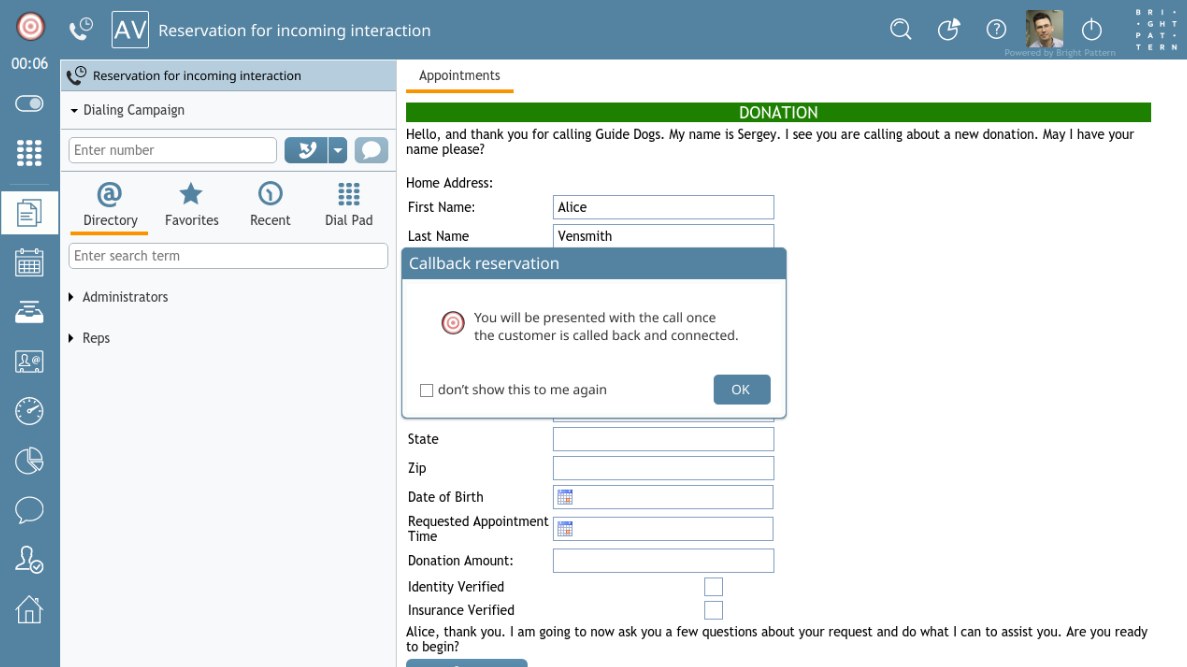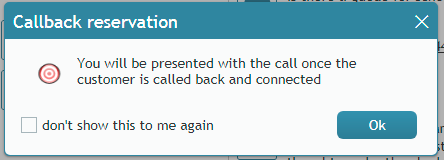Overview
The Bright Pattern Contact Center Virtual Queue Tutorial explains Bright Pattern's virtual queue option, how to configure it, and how enabling it can affect reporting statistics.
Virtual Queuing, also referred to as the Callback Option, is an enhancement of the regular automatic call distribution method (ACD) used in inbound call centers. During periods of significant wait times, this option allows customers to hang up the call while keeping their position in the service queue and to receive a callback when it is their turn to be connected to an agent. The benefits of using virtual queuing include:
- Improved customer satisfaction – After requesting a callback, customers get back to their normal activities instead of being tied on the phone.
- Reduced abandonment rates – Customers who can continue their normal activities are less likely to abandon their service requests (i.e., to ignore the callback).
- Reduced talk time – Customers waiting in a virtual queue are less likely to spend any time venting their frustration with a long wait when they are finally connected to an agent.
- Lower telco costs – Customers waiting in a virtual queue do not occupy physical voice channels.
How It Works
Bright Pattern Contact Center Virtual Queue works in the following way:
For each incoming service call, the system calculates its estimated waiting time (EWT) in the queue. If this time exceeds a threshold EWT value preconfigured for the given service, the system notifies the calling customer about the wait time and offers the customer the option of receiving a callback when it is the customer's turn to be connected to an agent. The customer can request the callback to be made to the phone from which the customer is calling, or to a different number that the customer can enter using the phone keypad. The original live call is then disconnected while the customer’s position in the service queue is maintained by the system as if the customer had remained on the line, hence the name Virtual Queuing.
When it is the customer’s turn to be connected to an agent, the system makes an outbound call (callback) to the designated callback number. Upon answer, this call is connected to an available agent.
Initiation of the callback may be done either on prediction that an agent will become available around the expiration of EWT calculated for the given call or via explicit agent reservation.
When agent reservation mechanism is used, the system will wait for an agent to become available before making a call. When the agent becomes available, she is reserved for the given call. The agent is then notified by a pop-up window that she has been reserved for a callback; this window includes the optional checkbox Dont's show this to me again should she not want to see the pop-up on future callback reservations.
While explicit agent reservation guarantees agent availability to take a callback, it is less efficient in terms of agent utilization as agents will have to spend some time in a reserved state; it can be recommended for services with small numbers of agents where EWT calculation is usually less precise.
When the EWT-based mechanism is used, the callback attempt is made a few seconds before EWT expiration based on the prediction that an agent will have become available by the time the callback is answered by the customer. If an agent does not become available at that time, the answered call is placed in the first position in the service queue to be connected to the next available agent. An interactive voice response (IVR) announcement can be played for the answered callback to prevent the customer from hanging up a call if it cannot be immediately connected to an agent.
Generally, for services with larger pools of agents, the EWT-based mechanism will reliably connect answered callbacks to agents without compromising their utilization.
Subsequent processing of answered callbacks delivered to agents is no different from the processing of calls waiting in the queue.


